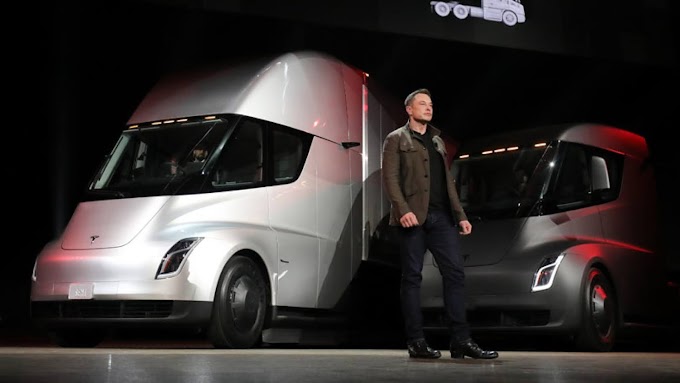1. China Petrochemical Corporation
China Petrochemical Corporation (Chinese: 中国石油化工集团公司; pinyin: zhōngguóshíyóuhuàgōngjítuángōngsī) or Sinopec Group is the world's largest oil refining, gas and petrochemical conglomerate, administered by SASAC for the State Council of the People's Republic of China. It is headquartered at Chaoyangmenwai in Beijing, across the road from the headquarters of fellow state-owned oil company and competitor CNOOC Group.
Sinopec Group ranked the 2nd in the Fortune Global 500 List in 2020, with revenue over US$407 billion. In the 2020 Forbes Global 2000, Sinopec was ranked as the 60th largest public company in the world.
According to the Fortune Global 500, Sinopec is the largest energy company in the world by revenue, the largest state-owned enterprise in both China and the world, and second largest company in the world in terms of revenue, behind only American retail store chain Walmart.
- Revenue - ¥2,966 Billion
- Net Income - ¥54.271 Billion
- Total Assets - ¥739 Billion
2.State Grid Corporation of China
The State Grid Corporation of China (SGCC), commonly known as the State Grid, is a Chinese state-owned electric utility corporation. It is the largest utility company in the world, and as of 2020, the world's second largest company overall by revenue. In 2016/17 it was reported as having 927,839 employees, 1.1 billion customers and revenue equivalent to US$363.125 billion.
After the electricity "Plant-Grid Separation" reform in early 2002, the assets of State Electric Power Corporation (国家电力公司) were divided into the five "power generation groups" that retained the power plants and five regional subsidiaries belonging to the State Grid Corporation of China in Beijing.
- Revenue - US$ 363.125 billion
- Net Income - US$ 10.201 billion
- Total Assets - US$ 585.278 billion
3.China National Petroleum Corporation
The China National Petroleum Corporation (CNPC) (simplified Chinese: 中国石油天然气集团公司; traditional Chinese: 中國石油天然氣集團公司; pinyin: Zhōngguó Shíyóu Tiānránqì Jítuán Gōngsī) is a major national oil and gas corporation of China and one of the largest integrated energy groups in the world. Its headquarters are in Dongcheng District, Beijing. CNPC was ranked fourth in 2020 Fortune Global 500, a global ranking of the largest corporations by revenue.
- Revenue - ¥ 2,516 billion
- Net Income - ¥ 67 billion
- Total Assets - ¥ 2,732 billion
4.China State Construction Engineering
The China State Construction Engineering Corporation (CSCEC) (simplified Chinese: 中国建筑集团有限公司; traditional Chinese: 中國建築集團有限公司; pinyin: Zhōngguó jiànzhú jítuán yǒuxiàn gōngsī) is the largest construction company in the world by revenue and the 14th largest general contractor in terms of overseas sales, as of 2016.
While most of the assets of CSCEC were floated in the stock exchange as China State Construction Engineering Corporation Limited (CSCECL), CSCEC retained some assets such as schools and hospitals, as well as the stake in China Construction International Corporation (Chinese: 中国对外建设总公司) which was not able to be transferred. Thus, CSCEC granted the listed company supervising rights.
5.Ping An Insurance
Ping An Insurance known also as Ping An of China (simplified Chinese: 中国平安; traditional Chinese: 中國平安; pinyin: Zhōngguó Píng Ān), full name Ping An Insurance (Group) Company of China, Ltd. is a Chinese holding conglomerate whose subsidiaries mainly deal with insurance, banking, asset management, financial services, healthcare, auto services and smartcity. The company was founded in 1988 and is headquartered in Shenzhen. "Ping An" literally means "safe and well".
Ping An ranked 7th on the Forbes Global 2000 list and 21st on the Fortune Global 500 list.
The company is considered to be China's biggest insurer, with US$110 billion in net premiums written in 2019. Its market capitalization is at US$217 billion in March 2021, making it the largest insurer in Asia-Pacific.
Ping An Insurance is one of the top 50 companies in the Shanghai Stock Exchange. It is also a constituent stock of Hang Seng Index, an index of the top 50 companies in the Hong Kong Stock Exchange. Ping An Insurance was also included in the pan-China stock indices CSI 300 Index, FTSE China A50 Index and Hang Seng China 50 Index.
Ping An Insurance has been selected for the 2019 Dow Jones Sustainability Emerging Markets Index (DJSI). It was the first insurance company from mainland China to be selected on the index. Ping An is a signatory of the United Nations-supported Principles for Responsible Investment (PRI), and was the first asset owner in mainland China to join.
Ping An Insurance consistently ranks as the world's top global insurance brand, and as of 2020, was the most valuable global financial brand in the world.
- Revenue - ¥687,788 Million
- Net Income - ¥58,005 Million
- Total Assets - ¥98,876,888 Million
6.Industrial and Commercial Bank of China
Industrial and Commercial Bank of China Limited (Chinese: 中国工商银行; pinyin: Zhōngguó gōngshāng yínháng; abb. ICBC) is a multinational Chinese banking company.
Founded as a limited company on 1 January 1984, ICBC is a state-owned commercial bank. With capital provided by the Ministry of Finance of China, the bank's Tier 1 capital in 2013 was the largest of one thousand global banks, being the first bank headquartered in China to achieve this distinction in modern history. Subsequently, ranked the largest bank in the world 2017 and 2018, by total assets, (31 December 2020, US$4.324 trillion), ICBC was positioned at 1st in The Banker's Top 1000 World Banks ranking, every year from 2012 to 2019, and first (2019) on the Forbes Global 2000 list of the world's biggest public companies. It is considered a systemically important bank by the Financial Stability Board.
Several former employees of ICBC have moved on to work in prominent government positions in China. Notable ICBC alumni include Chairman of CSRC Huiman Yi, and Deputy Governor of PBoC Gongsheng Pan.
7.China Construction Bank
China Construction Bank Corporation (CCB) is one of the "big four" banks in the People's Republic of China. In 2015 CCB was the 2nd largest bank in the world by market capitalization and 6th largest company in the world. The bank has approximately 13,629 domestic branches. In addition, it maintains overseas branches in Barcelona, Frankfurt, Luxembourg, Hong Kong, Johannesburg, New York City, Seoul, Singapore, Tokyo, Melbourne, Kuala Lumpur, Santiago de Chile, Sydney and Auckland, and a wholly owned subsidiary in London. Its total assets reached CN¥ 8.7 trillion in 2009, and it is considered a systemically important bank by the Financial Stability Board. Its headquarters is in Xicheng District, Beijing.
- Revenue - CN¥633.77 billion
- Net Income - CN¥255.63 billion
- Total Assets - CN¥23.22 trillion
8.Agricultural Bank of China
Agricultural Bank of China (ABC), also known as AgBank, is one of the "Big Four" banks in the People's Republic of China. It was founded on July 10, 1951, and has its headquarters in Dongcheng District, Beijing. It has branches throughout mainland China, Hong Kong, London, Tokyo, New York, Frankfurt, Sydney, Seoul, and Singapore.
ABC has 320 million retail customers, 2.7 million corporate clients, and nearly 24,000 branches. It is China's third largest lender by assets. ABC went public in mid-2010, fetching the world's biggest ever initial public offering (IPO) at the time, since overtaken by the Saudi Arabian state-run petroleum enterprise, Saudi Aramco. In 2011, it ranked eighth among the Top 1000 World Banks, by 2015, it ranked third in Forbes' 13th annual Global 2000 list and in 2017 it ranked fifth. It is considered a systemically important bank by the Financial Stability Board.
- Revenue - CN¥602.56 billion
- Net Income - CN¥251.67 billion
- Total Assets - CN¥22.609 trillion
9.Bank of China
The Bank of China (Chinese: 中国银行; pinyin: Zhōngguó yínháng; often abbreviated as 中行 or BOC) is one of the four biggest state-owned commercial banks in China. Bank of China is legally separate from its subsidiary Bank of China (Hong Kong), although they maintain close relations in management and administration and co-operate in several areas including reselling BOC's insurance and securities services.
It was founded in 1912 by the Republican government to replace the Daqing Bank. It is the second oldest bank in mainland China still in existence (after the Bank of Communications, founded in 1908). From its establishment until 1942, it issued banknotes on behalf of the Government along with the "Big Four" banks of the period: the Farmers Bank of China, Bank of Communications and Central Bank of the Republic of China. Its headquarters are in Xicheng District, Beijing.
As of 31 December 2019, it was the second-largest lender in China overall and ninth-largest bank in the world by market capitalization value, and it is considered a systemically important bank by the Financial Stability Board. As of the end of 2020, it was the fifth-largest bank in the world in terms of total assets, ranked after the other three Chinese banks, and one American bank (JPMorgan Chase).
- Revenue - CN¥503.81 billion
- Net Income - CN¥192.44 billion
- Total Assets - CN¥21.267 trillion
10.China Life Insurance Company
China Life Insurance Company Limited (short China Life, simplified Chinese: 中国人寿保险; traditional Chinese: 中國人壽保險; pinyin: Zhōngguó rénshòu bǎoxiǎn) is a Beijing-headquartered China-incorporated company that provides life insurance and annuity products. China Life is ranked No. 94 on Fortune 2015 Global 500 Company list.With 70% state-ownership, China Life is the biggest life insurer in China in terms of total assets, but has experienced economic difficulty in the past years. China's insurance market has attracted dozens of new competitors after the Chinese government liberalized it, and China Life's market share has fallen by almost half since 2007, from 50% to around 26%, according to Morningstar. The company is completing a major restructuring, and the government assigned it a new CEO in 2014. A new sales push early this year (fueled by an army of newly hired agents) led to a big bump in net income in the first quarter of 2015. China Life is also ranked on Fortune China: 2015 Top 500 Chinese Enterprises at No.13.
China Life has more than 600,000 agents nationwide, making its cost of acquiring new customers relatively low. China Life has a substantial share of China's group life and health insurance business, and its government ties give it an inroad to help it build that business among state-owned enterprises.
In 2015 China's government allowed Chinese insurance companies to invest in foreign real estate; China Life subsequently made its first such investment, in a Boston waterfront project.
- Revenue - 768,438,310,000 renminbi
- Total Assets - $362.1 billion















0 Comments